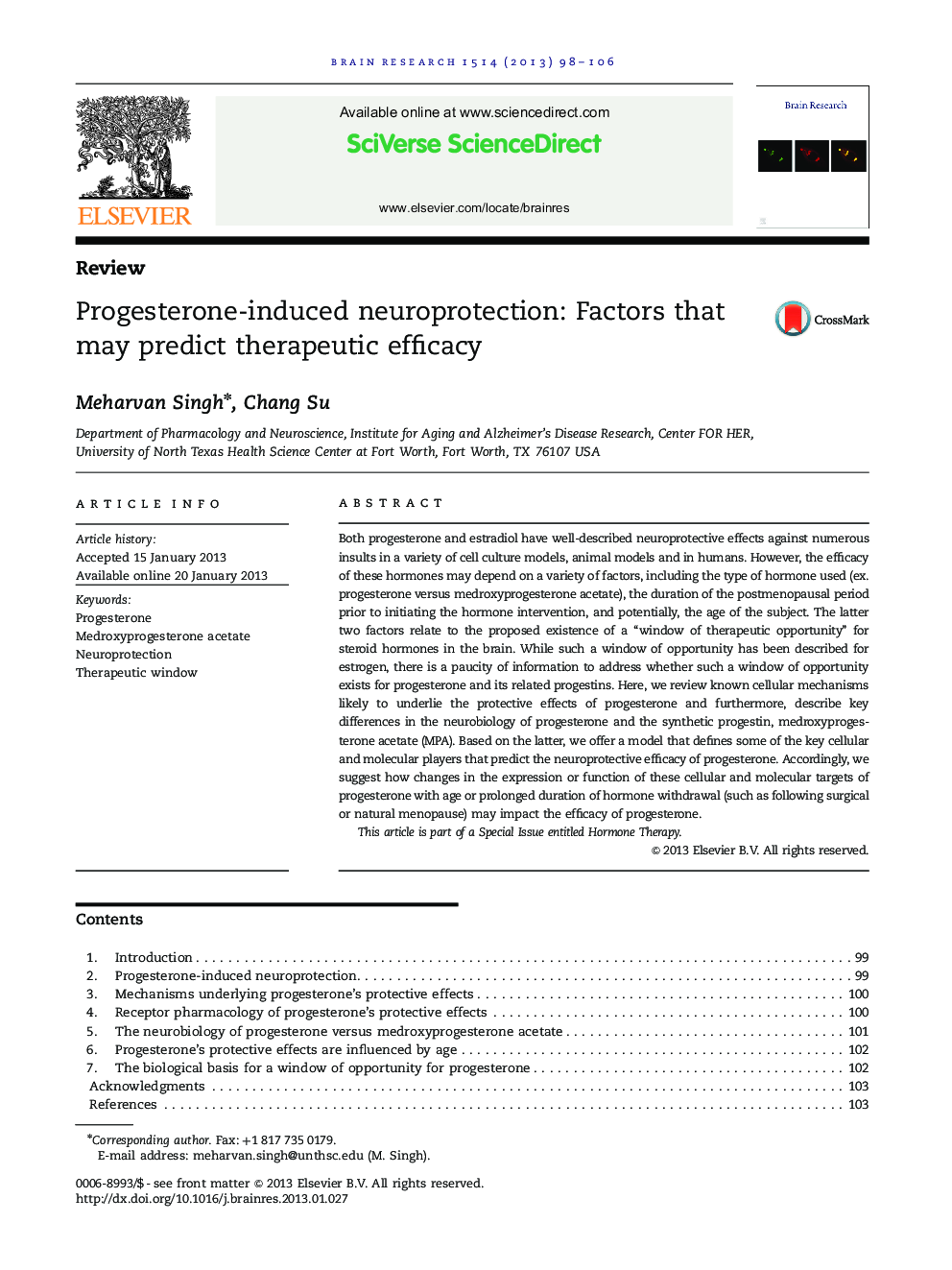| Article ID | Journal | Published Year | Pages | File Type |
|---|---|---|---|---|
| 4324670 | Brain Research | 2013 | 9 Pages |
Both progesterone and estradiol have well-described neuroprotective effects against numerous insults in a variety of cell culture models, animal models and in humans. However, the efficacy of these hormones may depend on a variety of factors, including the type of hormone used (ex. progesterone versus medroxyprogesterone acetate), the duration of the postmenopausal period prior to initiating the hormone intervention, and potentially, the age of the subject. The latter two factors relate to the proposed existence of a “window of therapeutic opportunity” for steroid hormones in the brain. While such a window of opportunity has been described for estrogen, there is a paucity of information to address whether such a window of opportunity exists for progesterone and its related progestins. Here, we review known cellular mechanisms likely to underlie the protective effects of progesterone and furthermore, describe key differences in the neurobiology of progesterone and the synthetic progestin, medroxyprogesterone acetate (MPA). Based on the latter, we offer a model that defines some of the key cellular and molecular players that predict the neuroprotective efficacy of progesterone. Accordingly, we suggest how changes in the expression or function of these cellular and molecular targets of progesterone with age or prolonged duration of hormone withdrawal (such as following surgical or natural menopause) may impact the efficacy of progesterone.This article is part of a Special Issue entitled Hormone Therapy.
